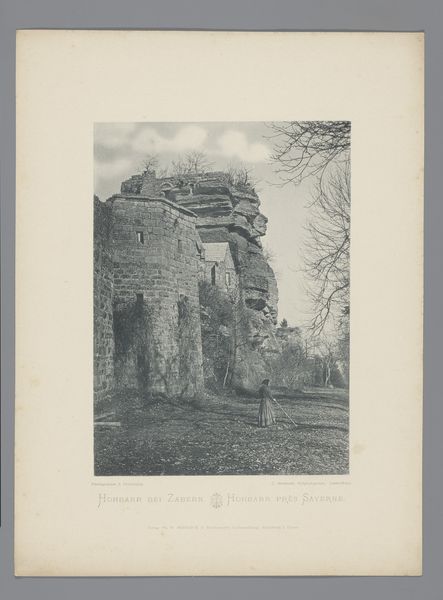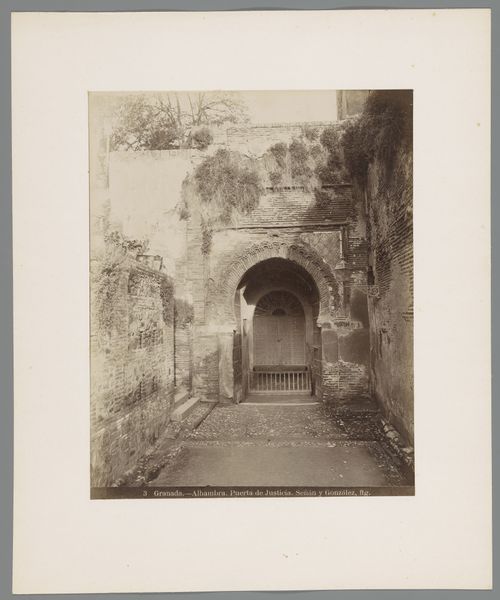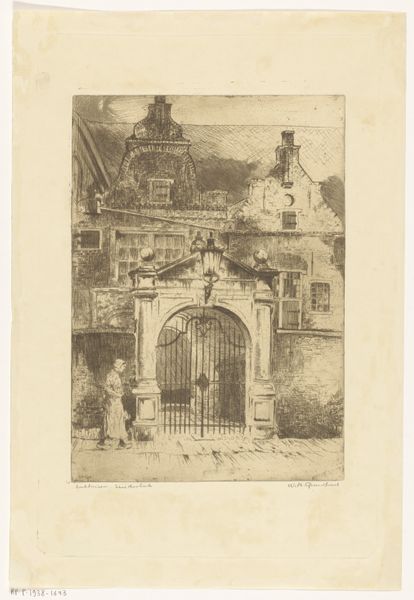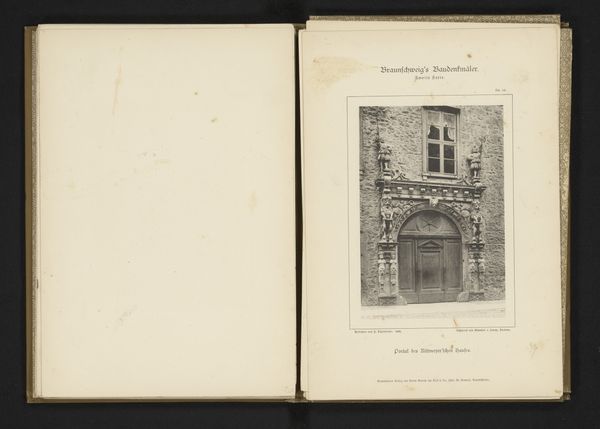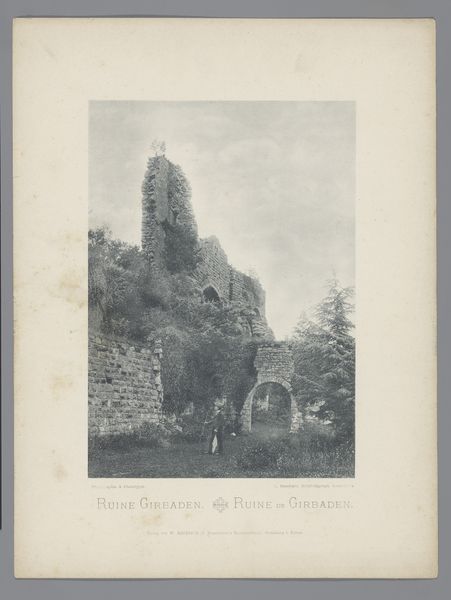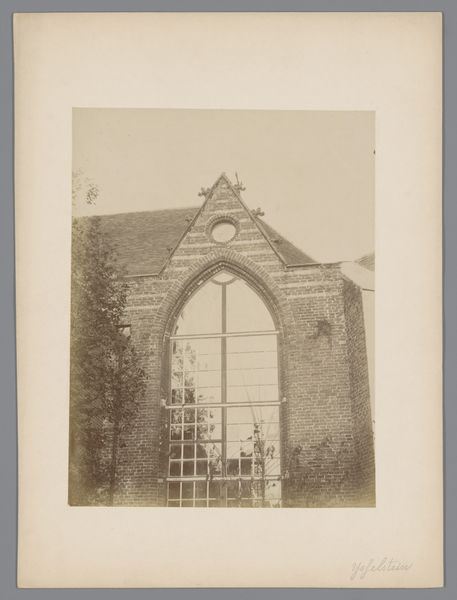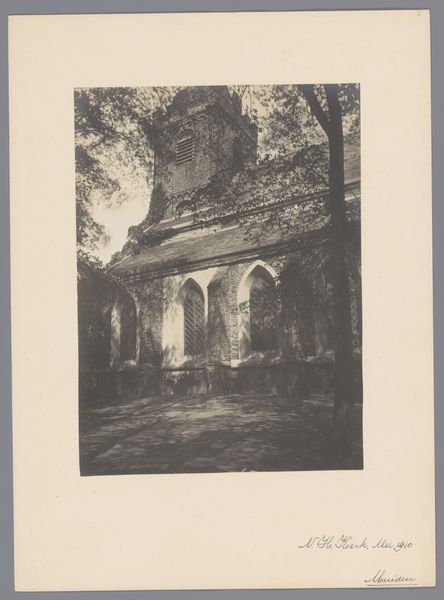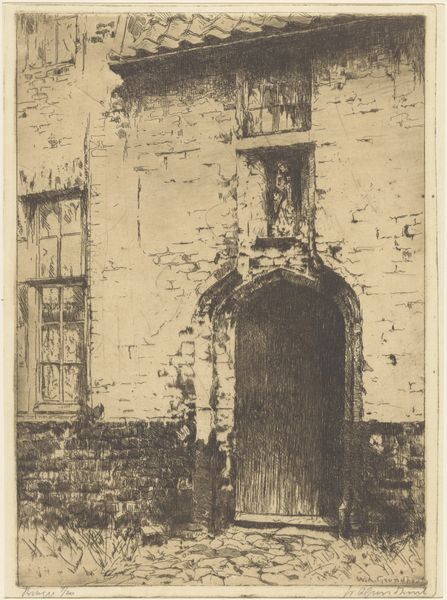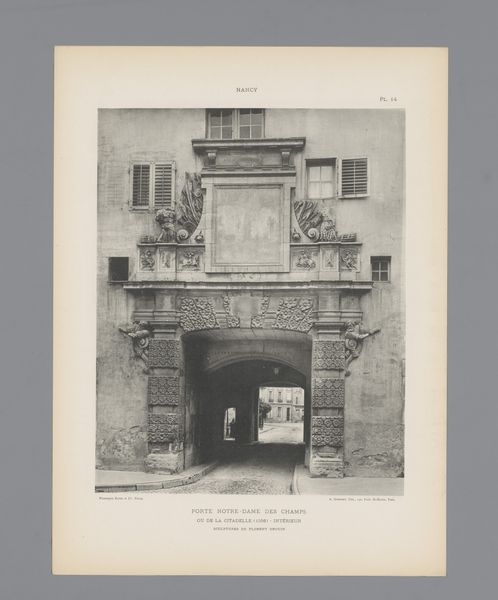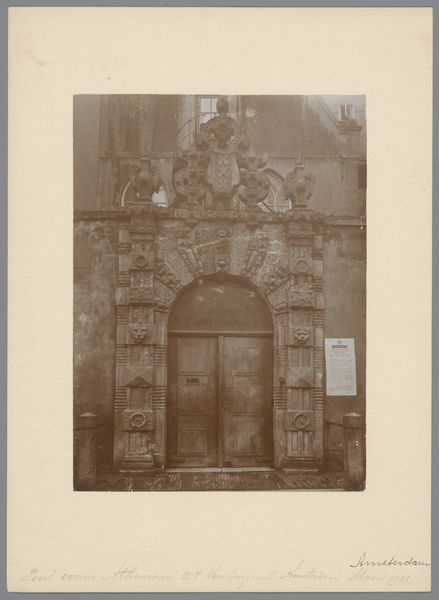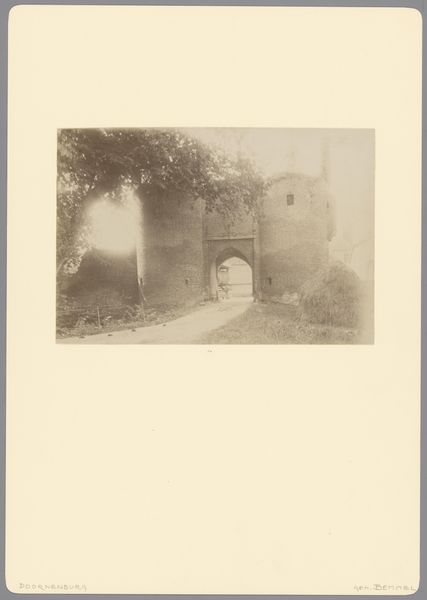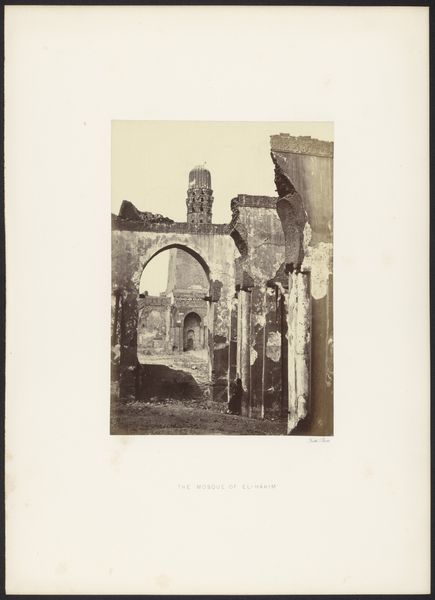
print, photography, architecture
#
aged paper
#
homemade paper
#
paper non-digital material
#
pale palette
#
medieval
#
paperlike
# print
#
light coloured
#
landscape
#
personal journal design
#
photography
#
personal sketchbook
#
folded paper
#
orientalism
#
cityscape
#
paper medium
#
architecture
Dimensions: height 217 mm, width 155 mm
Copyright: Rijks Museum: Open Domain
Curator: This photogravure is titled "Ingang van Château de Hohbarr bij Saverne," or "Entrance to the Château de Hohbarr near Saverne," created before 1894 by Charles Bernhoeft. What’s your first impression? Editor: Crumbling grandeur. It speaks of forgotten power, the very stone worn down by time and weather. Look at the materiality of it, the texture captured in monochrome – all these aged layers reproduced with light and chemistry onto a sheet of paper! Curator: Indeed, and if we consider Saverne's location in Alsace, a region historically contested between France and Germany, the ruin takes on deeper meaning. Bernhoeft captures not just the physicality of the entrance, but also suggests the fragility of borders and the shifting tides of power. What does the material of the print, this paper, evoke? Editor: Well, I think that handmade or 'aged paper' effect is essential; its physical properties signal value, perhaps echoing that slow reveal from stone quarry to image and final consumption. Curator: Exactly! The act of producing these photogravures—the labor involved, the choice of materials—becomes a statement in itself. In contrast with mass produced images of our time, it embodies a unique historical moment. How might this architectural fragment symbolize identity? Editor: I think architecture can solidify identity. The castle gate represents something that once commanded, or barred, passage. Bernhoeft preserves evidence of this lost system of building, which reflects an active manipulation of earth’s material to mark social control. Curator: Absolutely, its ruined state, ironically immortalized on paper, allows us to engage in dialogue on themes like the performance of identity, labor, gender and historical construction. What meaning emerges as this print transforms with age? Editor: Ultimately, I come back to the physicality, its transformation being critical. Each viewer encounters an altered piece from the artist. What’s more is the physical and political history we impose onto those processes of aging. Curator: Indeed, viewing through this lens encourages critical engagement. Thanks to how you highlight materials, viewers are urged to investigate the historical, social, and economic narratives embedded within its materiality. Editor: Thank you. Focusing on labor and aging reveals what becomes apparent when an old castle, rendered in print, can reveal social construction.
Comments
No comments
Be the first to comment and join the conversation on the ultimate creative platform.
